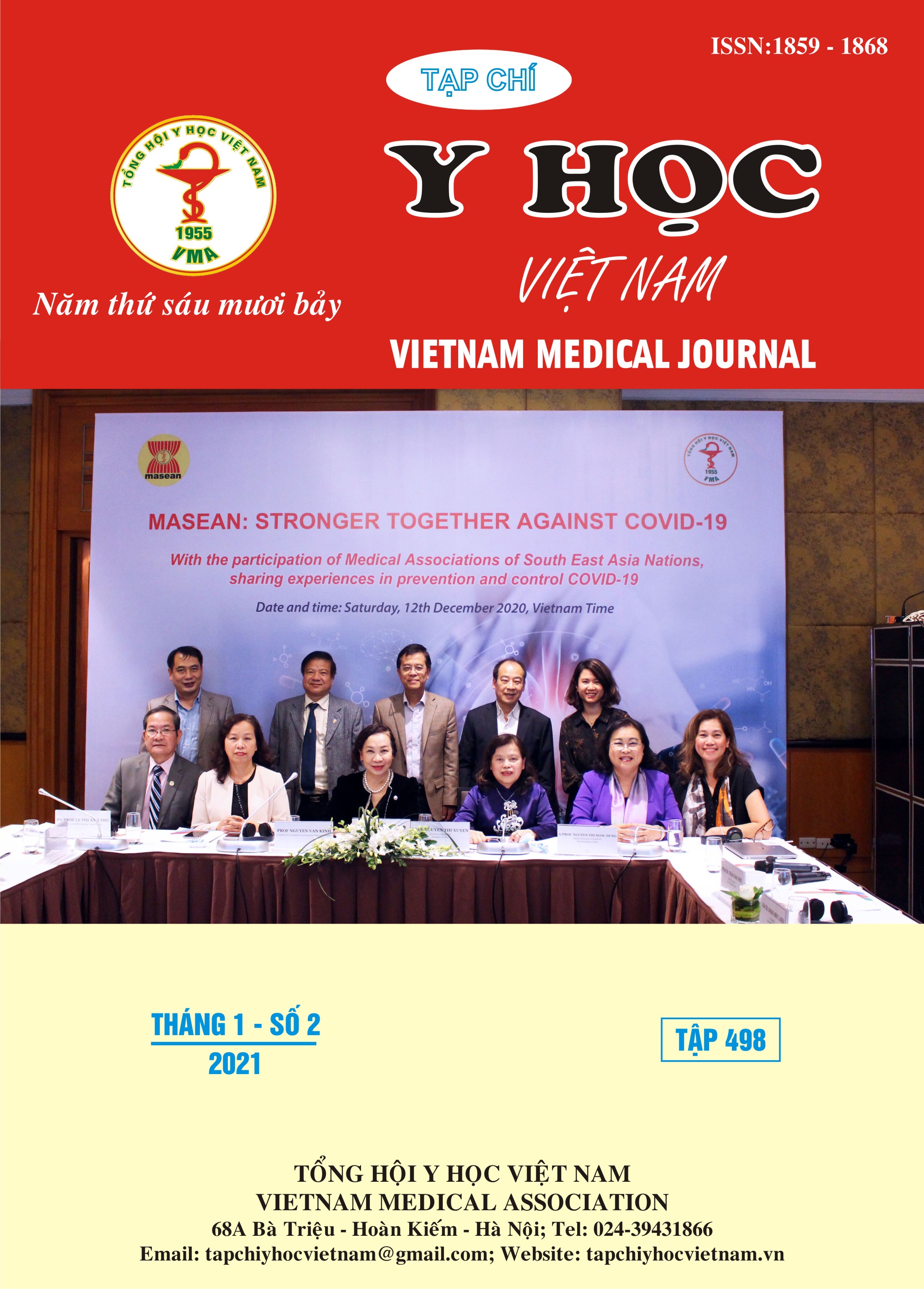ĐIỂM VÔI HOÁ VÀ MỨC ĐỘ HẸP MẠCH VÀNH TRÊN CẮT LỚP VI TÍNH 256 DÃY
Nội dung chính của bài viết
Tóm tắt
Mục tiêu: nghiên cứu sự liên quan giữa điểm vôi hoá và mức độ hẹp động mạch vành trên CLVT 256 dãy. Đối tượng và phương pháp: Nghiên cứu mô tả cắt ngang 150 BN chẩn đoán bệnh mạch vành được chụp CLVT 256 dãy động mạch vành tại Bệnh viện Hữu nghị Việt Đức từ 1/7 đến 30/7/2020. Kết quả: gồm 75 nam và 75 nữ. Tuổi trung bình là 65,1±11,92. Có 86/150(57,3%) BN có vôi hoá mạch vành với điểm vôi hoá trung bình là 351,2±529,47 (từ 1- 2652 điểm). Điểm vôi hóa trung bình của các BN<60 tuổi là 46,5±144,35 và của các BN ≥ 60 tuổi là 274,2±504.28 (P=0,003). Điểm vôi hóa trung bình của các BN hẹp mạch vành ≥50% là 691,9±674,61 và hẹp <50% là 117,4±173,58 (p<0,001). Đường cong ROC biểu thị liên quan điểm vôi hoá và mức độ hẹp mạch vành ≥50% có diện tích dưới đường cong (AUC) là 0,829 (95%CI: 0,740 -0,919) với p<0,001. Điểm vôi hoá cut-off=196 điểm với Sensitivity=0,706 và 1-Specificity=0,173. Kết luận: Điểm vôi hóa mạch vành liên quan đến mức độ hẹp nên có khả năng dự báo nguy cơ tai biến do bệnh mạch vành trong tương lai.
Chi tiết bài viết
Từ khóa
vôi hoá mạch vành, bệnh mạch vành, cắt lớp vi tính
Tài liệu tham khảo
2. Schuhbaeck A, Schmid J, Zimmer T, Muschiol G, Hell MM, Marwan M, et al (2016). Influence of the coronary calcium score on the ability to rule out coronary artery stenoses by coronary CT angiography in patients with suspected coronary artery disease. J Cardiovasc Comput Tomogr; 10(5): 343–50.
3. Gambre AS, Liew C, Hettiarachchi G, Lee SSG, MacDonald M, Kam CJW, et al (2018). Accuracy and clinical outcomes of coronary CT angiography for patients with suspected coronary artery disease: a single-centre study in Singapore. Singapore Med J;59(8):413–8.
4. Zreik M, van Hamersvelt RW, Wolterink JM, Leiner T, Viergever MA, Isgum I. A. (2019). Recurrent CNN for Automatic Detection and Classification of Coronary Artery Plaque and Stenosis in Coronary CT Angiography. IEEE Trans Med Imaging;38(7):1588–98.
5. Shaw LJ, Raggi P, Schisterman E, Berman DS, Callister TQ (2003). Prognostic Value of Cardiac Risk Factors and Coronary Artery Calcium Screening for All-Cause Mortality. Radiology;228(3):826–33.
6. Malguria N, Zimmerman S, Fishman EK (2018). Coronary Artery Calcium Scoring: Current Status and Review of Literature. J Comput Assist Tomogr;42(6):887-97.
7. Van Dijk JD, Shams MS, Ottervanger JP, Mouden M, van Dalen JA, Jager PL (2017). Coronary artery calcification detection with invasive coronary angiography in comparison with unenhanced computed tomography. Coron Artery Dis [Internet];28(3): 246-52.
8. Plank F, Burghard P, Friedrich G, Dichtl W, Mayr A, Klauser A, et al (2016). Quantitative coronary CT angiography: absolute lumen sizing rather than %stenosis predicts hemodynamically relevant stenosis. Eur Radiol;26(11):3781–9.


